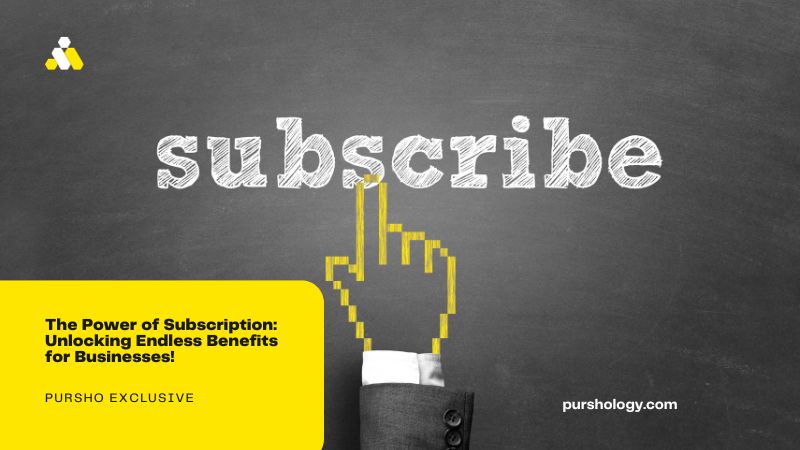Discover the untapped potential of subscriptions and how they can revolutionize your business strategy. Don’t miss out!
 Image courtesy of Asiama Junior via Pexels
Image courtesy of Asiama Junior via Pexels
Table of Contents
The Power of Subscription: Why Embracing a Recurring Revenue Model Is Game-Changing for Businesses
In today’s rapidly evolving marketplace, businesses are continuously seeking innovative strategies to maximize profits and build sustainable customer relationships. Amongst the various approaches, a subscription-based model has emerged as a powerful tool that grants businesses an upper hand over traditional one-time purchases. In this blog post, we will delve into the advantages of adopting a subscription model and shed light on how it can significantly benefit businesses.
The Rise of Subscription-Based Business Models
A subscription-based model is a business approach where customers pay a recurring fee to access a product or service. It has gained immense popularity in recent years due to various reasons.
Firstly, consumers’ preferences have shifted towards subscription-based services and products. The convenience, flexibility, and affordability of subscriptions cater to the modern customer’s desire for hassle-free experiences.
Secondly, we have seen successful examples of businesses leveraging the subscription model. Companies like Netflix, Spotify, and Amazon Prime have demonstrated the potential of recurring revenue streams, attracting millions of subscribers and generating impressive financial returns.
Enhanced Customer Retention and Loyalty
One crucial advantage of the subscription model is its ability to build long-term customer relationships and foster loyalty.
By offering customers a subscription-based pricing model, businesses create a strong incentive for customers to stay engaged with their products or services. Customers who have subscribed are more likely to continue using the product or service regularly, leading to increased customer retention rates.
Moreover, predictable revenue streams are another key benefit. Unlike one-time purchases, where revenue is largely dependent on sporadic sales, subscriptions provide recurring income, creating financial stability for businesses.
Additionally, personalization and customization play a vital role in driving customer loyalty. With a subscription model, businesses have the opportunity to gather data on customer preferences, behavior, and usage patterns. This data can be leveraged to offer tailored experiences, unlocking higher customer satisfaction and strengthening loyalty.
Increased Revenue Stability and Financial Growth
The subscription model offers businesses a stable and predictable revenue stream, contributing to financial stability and growth.
Recurring revenue allows businesses to project cash flow and plan investments more accurately. This stability enables companies to make informed business decisions, such as expanding their product offerings, investing in marketing initiatives, or improving customer support services.
Leveraging customer data is another critical aspect of subscription-based models. By analyzing customer usage patterns and preferences, businesses can optimize pricing strategies and package offerings, ensuring the right balance between value and profitability.
Furthermore, the scalability potential of subscription models should not be overlooked. With a growing subscriber base and predictable revenue streams, businesses can invest in scaling their operations, exploring new markets, and expanding their product or service portfolio.
Driving Business Innovation and Product Development
A subscription model encourages continuous innovation and product development, driven by a feedback loop with customers.
By gathering customer feedback and insights on a regular basis, businesses can make iterative improvements to their offerings. These enhancements can be based on customer suggestions, pain points, or requests, ultimately leading to a better product or service.
Additionally, subscription models provide the flexibility to introduce and experiment with new features or offerings. Companies can launch new features to subscribers, test their response, and refine their offerings based on the feedback received. This agile approach to product development enables businesses to stay ahead of the competition and meet the evolving needs of their customers.
Furthermore, the access to vast amounts of customer data provided by the subscription model empowers businesses to make data-driven decisions. By analyzing this data, companies can unlock key insights into customer behavior, preferences, and trends, giving them a competitive edge in the market.
Improved Customer Acquisition Strategies
Subscription models come with their own set of benefits when it comes to acquiring new customers.
Firstly, the cost of acquiring new customers is often lower compared to one-time purchase businesses. Since customers are more likely to stick around and generate recurring revenue, the return on investment (ROI) for customer acquisition in subscription models tends to be higher.
Incentives and trial options also play a significant role in attracting new customers. Offering free trials or discounted initial periods can entice potential customers to try out a subscription and experience the value it provides, ultimately converting them into paying subscribers.
Additionally, implementing referral programs and leveraging word-of-mouth marketing can extend a business’s reach through existing satisfied customers, further driving customer acquisition.
Overcoming Challenges and Considerations
While the subscription model offers numerous benefits, it is important for businesses to navigate potential challenges and considerations.
One critical aspect is finding the right balance between pricing and the value proposition. Subscription pricing should align with the perceived value of the product or service to maintain customer satisfaction and prevent churn.
Managing customer expectations is also vital. Businesses must consistently deliver on their promised value and maintain service quality to ensure customer satisfaction and loyalty.
Adapting marketing and sales strategies to promote subscription-based offerings is another challenge. Educating customers on the benefits of a subscription model over one-time purchases may require a shift in messaging and communication strategies.
Conclusion
In conclusion, the subscription-based model is proving to be a game-changer for businesses in the modern market landscape. By embracing this dynamic approach, companies can fortify customer relationships, foster loyalty, achieve financial stability, and drive innovation. While challenges exist, the benefits outweigh the drawbacks, making it a viable option for businesses seeking long-term success. Embracing the power of subscription can truly unlock unparalleled growth and opportunities, enabling businesses to thrive in a rapidly evolving world.




